Audit of screen failure in 15 randomised studies from a low and middle-income country
Deevyashali Parekh†, Vijay M Patil†, Kavita Nawale†, Vanita Noronha, Nandini Menon, Sucheta More, Supriya Goud, Srushti Jain, Vijayalakshmi Mathrudev, Zoya Peelay, Sachin Dhumal, Shweta Jogdhankar and Kumar Prabhash
Department of Medical Oncology, Tata Memorial Centre and HBNI, Parel, Mumbai 400012, India
†These authors contributed equally
Abstract
Background: Growth and development in patient management occurs via randomised studies. Screen failure is a significant hurdle while conducting randomised studies. There is limited data available from low and middle-income countries about factors resulting in screen failure. Hence, this audit was performed to identify the proportion of patients who screen failed and to elucidate reasons for the same.
Methods: This was an audit of 15 randomised studies performed by medical oncology solid tumour unit II of Tata Memorial Centre. The screening logs of these studies were acquired. From the screening logs, data regarding the number of patients who had screen failed & reason for the same were obtained. Descriptive statistics were performed.
Results: A total of 7,481 patients were screened for 15 randomised clinical studies. Out of these, 3,666 (49.0%) patients were enrolled into trials and 3,815 (51.0%) screen failed. The most common reason for screen failure was ‘not meeting inclusion criteria’ (54.9%) followed by declining to take treatment (22.2%). Other factors that affect enrolment were ‘not willing to stay in the locality of the trial site’ (6.2%), being recruited in other studies (3.7%), poor performance status (PS) (3.4%), non-compliance (2.2%), meeting exclusion criteria (0.9%) and ‘other’ (6.5%).
Conclusion: The commonest causes of screen failure in lower and middle-income countries are non-meeting of inclusion criteria followed by declining to take treatment, not willing to stay in locality of trial site, recruited into other studies, poor PS, non-compliance, meeting exclusion criteria & ‘other’. This information would help analysing and hence planning of newer strategies to decrease the rate of screen failure.
Keywords: clinical trials, statistics, head and neck cancer, oncology, epidemiology, solid tumour
Correspondence to: Kumar Prabhash
Email: kumarprabhashtmh@gmail.com
Published: 23/11/2022
Received: 12/08/2022
Publication costs for this article were supported by ecancer (UK Charity number 1176307).
Copyright: © the authors; licensee ecancermedicalscience. This is an Open Access article distributed under the terms of the Creative Commons Attribution License (http://creativecommons.org/licenses/by/4.0), which permits unrestricted use, distribution, and reproduction in any medium, provided the original work is properly cited.
Introduction
Randomised clinical studies are fundamental to improvement and development in patient management. They help evaluate the efficacy of an existing or new intervention against standard of care or placebo hence offering valuable information on the relative benefit of the intervention. While a single study cannot provide conclusive evidence standalone, each such study helps lend credence to a hypothesis regarding the efficacy of an intervention, reduces bias and might provide additional data of idiosyncrasies in efficacy by disease type, severity, ethnicity, age, gender, etc. Thus, randomised clinical trials (RCTs) are often considered a robust way to determine the cause–effect relationship between an intervention and a given outcome [1].
Screen failure occurs when a patient is screened to be enrolled into a given study or trial but is unable to be enrolled. Screen failure is a significant hurdle while conducting randomised studies. Patients that are screened are already from a narrow set of patients deemed as potentially suitable for that trial and thus screen failure leads to a loss of valuable data in that trial. The power of a trial correlates inversely with the sample size and hence screen failure negatively impacts this. Screen failure also leads to a loss of valuable time and resources in the screening process which ultimately do not contribute towards the outcome result and often also in continued trial recruitment.
There is limited data available from low and middle income country (LMIC) about factors resulting in screen failure. Thus, we decided to perform this audit to try to identify the number of patients who underwent screen failure and attempt to elucidate reasons for the same.
Method
Study conduct
This single-centre retrospective analysis was done at our institution in India. Fifteen RCTs that were performed at our institution were audited. The study was conducted in accordance with the standards laid down by the declaration of Helsinki, International Conference on Harmonisation Good Clinical Practice (ICH-GCP) and Indian Council of Medical Research (ICMR). Data collection for the study was done in 2022.
Patient selection
Patients from 15 randomised studies done at our institution that underwent screen failure were selected for audit in this study. Screening was done by investigators in each study. Patients who were deemed as potential fits for each respective study underwent a screening procedure to determine enrolment into that study. If a patient was unable to be enrolled into the study for any given reason after being screened, they were classified as ‘screen failure’. A flowchart of inclusion and exclusion criteria for patients in this study is depicted in Figure 1.
Data collection
The data was collected on a predefined data collection sheet which was shared with all investigators. The data collected was of the number of patients screened for each of the 15 trials, the number of patients who screen failed for each trial and the reason for their screen failure.
Results
A total 7,481 patients were screened for 15 randomised clinical studies. Out of these, 3,666 (49.0%) patients were enrolled into trial and 3,815 (51.0%) screen failed (Table 1). Details of recruitment, intent and targeted site for each of the 15 studies are given in Table 2. Further details including the title as well as a ‘key points’ summary of each of these trials is included in Table S1 in the Supplementary Appendix. Total, enrolled and screenfailed patients by therapeutic site of trial and by intent of trial are depicted in Table 3 and 4 respectively. The most common reason for screen failure was non-meeting inclusion criteria (54.9%) followed by declining to take treatment (22.2%). These were followed by ‘Other’ (6.4%) which included reasons like taking a certain treatment at a different hospital or death before being able to complete screening. Not willing to stay at locality of trial site (6.2%), recruited in other study (3.7%) and poor performance status (PS) were the other significant causes for screen failure listed in order of magnitude. The full list of causes for screen failure is listed in Table 5 and in Figure 2.
Table 1. Number of patients for each screening outcome of the total screened patients from 15 RCTs. RCT, Randomised controlled trial.

Table 2. Baseline characteristics and recruitment overview of all 15 RCTs included in this study.
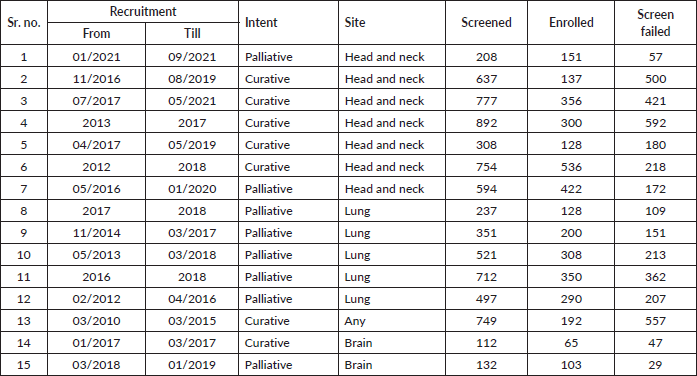
Table 3. Total, enrolled and screen-failed patients by major therapeutic area of trial.
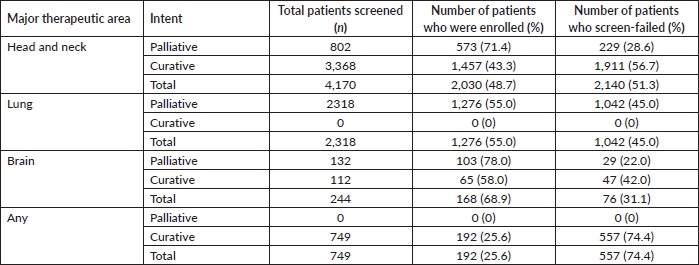
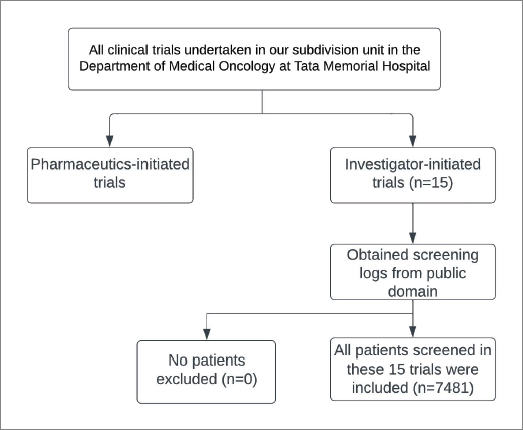
Figure 1. Flowchart of inclusion and exclusion criteria for patients in this study.
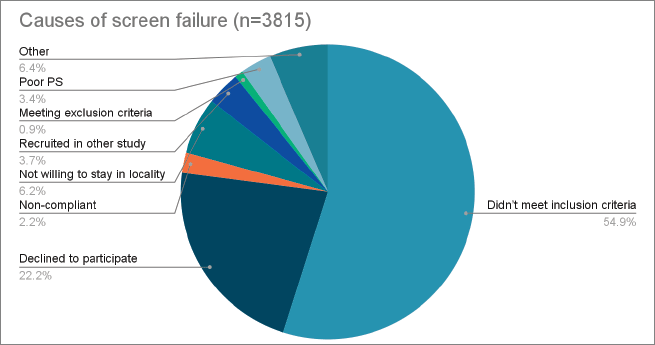
Figure 2. Pie-chart showing the distribution of causes of screen failure (n = 3,815).
Table 4. Total, enrolled and screen-failed patients by intent of trial.

Table 5. Reason for screen failure. PS, Performance status.
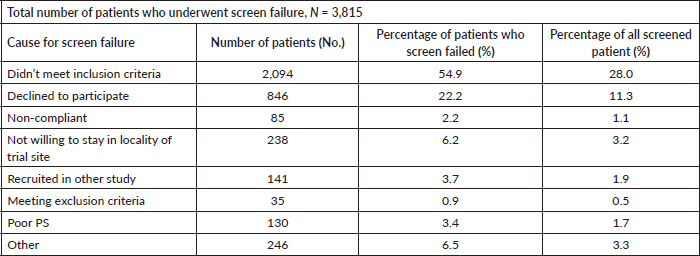
Discussion
Randomised clinical studies are the cornerstone of advancement and development in patient management. They help evaluate the efficacy of an existing or new intervention against standard of care or placebo hence offering valuable information on the relative benefit of the intervention. RCTs are often considered a robust way to determine a cause–effect relationship between an intervention and a given outcome [1].
Screen failure occurs when a patient is screened to be enrolled into a given study or trial but is unable to be enrolled. Screen failure is a significant hurdle while conducting randomised studies [2].
Our data shows that the largest determinant of screen failure for patients is ‘not meeting the inclusion criteria’ (54.9%). While well-framed, objective criteria maintain the integrity of a study, this finding suggests that increasingly strict or rigid criteria could be contributing to a large number of screen failures [3, 4]. Due to the burden of a large number of screen failures, it may be worth looking into and analysing inclusion criteria to ensure a balance between maintaining integrity of data and not being overly rigid [5–7].
Declining to participate in the trial (22.2%) and non-compliance (2.2%) made up a big part of screen failure. These are especially important determinants as they seem most amenable to correction [8, 9]. To an extent, non-compliance of patients and also their decision against participating in the trial can benefit from better counselling and teaching methods by investigators involved in recruitment. Care should be taken to explain treatment options and regimens in a language that the patient understands and is comfortable with. The teach-back method can be used to ensure patient understanding. Involved personnel can undergo some training in counselling practices with the hope that it may lead to greater patient participation in trials.
The other criteria making a significant contribution that has room to be benefitted is ‘unwillingness to stay in the locality of trial site’ (6.2%). Treatment and trial participation often require regular treatment at short intervals and follow-up investigations at short intervals. Trials of this nature would require that the patient have ease of geographic access to the site of the trial on a daily or weekly basis. For some patients, the financial, logistical and social challenges of relocating to the trial site are a significant hurdle. Trials of relatively uncommon conditions designed with such accessibility requirements could have funding and provision allowing the relocation of a patient and their support to the site of the study temporarily. It could also provide basic necessities and/or a stipend, travel arrangement, concession, etc.
Screen failure has a detrimental effect on trial power because sample size and power are inversely correlated. Failure to pass a screening also wastes time and money that could have gone toward improving the outcome, and it frequently results in trial recruitment continuing [10, 11].
There is limited data available from LMICs about factors resulting in screen failure. A similar audit coming out of a LMIC showed the screen failure rate at an impressive 5% [12, 13].
Thus, we decided to perform this audit to try to identify the number of patients who underwent screen failure and attempt to elucidate reasons for the same.
Conclusion
This audit was performed as limited data exists on factors impacting screen failure in trials in LMICs. A total 7,481 patients were screened for 15 randomised clinical studies. Out of these, 3,666 (49.0%) patients were enrolled into trial and 3,815 (51.0%) screen failed. The most common reason of screen failure was non-meeting inclusion criteria (54.9%) followed by declining to take treatment (22.2%). This information would help analyse and hence planning of newer strategies to decrease the rate of screen failure.
Key findings
This audit was performed as limited data exists on factors impacting screen failure in trials in LMICs.
A total of 7,481 patients were screened for 15 randomised clinical studies. Out of these, 3,666 (49.0%) patients were enrolled into trial and 3,815 (51.0%) screen failed.
The most common reason of screen failure was non-meeting inclusion criteria (54.9%) followed by declining to take treatment (22.2%).
This information would help analyse and hence planning of newer strategies to decrease the rate of screen failure.
Conflicts of interest
None.
Acknowledgments
None.
Funding statement
No funding was obtained to perform this study.
References
1. Hariton E and Locascio JJ (2018) Randomised controlled trials - the gold standard for effectiveness research: Study design: randomised controlled trials BJOG 125(13) 1716 https://doi.org/10.1111/1471-0528.15199 PMID: 29916205 PMCID: 6235704
2. Hammers DB, Foster NL, and Hoffman JM, et al (2019) Neuropsychological, psychiatric, and functional correlates of clinical trial enrollment J Prev Alzheimers Dis 6(4) 242–247 PMID: 31686096
3. Forrestal BJ, Khan JM, and Torguson R, et al (2021) Reasons for screen failure for transcatheter mitral valve repair and replacement Am J Cardiol 148 130–137 https://doi.org/10.1016/j.amjcard.2021.02.022 PMID: 33667453
4. Hotta M, Gafita A, and Czernin J, et al (2022) Outcome of patients with PSMA-PET/CT screen failure by VISION criteria and treated with 177Lu-PSMA therapy: a multicenter retrospective analysis J Nucl Med 63(10) 1484–1488 https://doi.org/10.2967/jnumed.121.263441 PMID: 35273096
5. Waksman R, Bakris GL, and Steinvil A, et al (2017) High screen failure rate in patients with resistant hypertension: findings from SYMPLICITY HTN-3 Am Heart J 192 76–84 https://doi.org/10.1016/j.ahj.2017.06.011 PMID: 28938966
6. Malik L and Lu D (2019) Eligibility criteria for phase I clinical trials: tight vs loose? Cancer Chemother Pharmacol 83(5) 999–1002 https://doi.org/10.1007/s00280-019-03801-w PMID: 30809701
7. Waijer SW, Provenzano M, and Mulder S, et al (2022) Impact of random variation in albuminuria and estimated glomerular filtration rate on patient enrolment and duration of clinical trials in nephrology Diabetes Obes Metab 24(6) 983–990 https://doi.org/10.1111/dom.14660 PMID: 35112455 PMCID: 9306498
8. Tiu C, Loh Z, and Gan CL, et al (2019) Effect of reasons for screen failure on subsequent treatment outcomes in cancer patients assessed for clinical trials Oncology 97(5) 270–276 https://doi.org/10.1159/000501211 PMID: 31266008
9. Xu Z, Sun W, and Zhang D, et al (2020) Recruitment and adherence of randomized controlled trials for mild cognitive impairment: a systematic review and meta-analysis Int J Geriatr Psychiatry 35(10) 1141–1150 https://doi.org/10.1002/gps.5336 PMID: 32420630
10. Elm JJ, Palesch Y, and Easton JD, et al (2014) Screen failure data in clinical trials: are screening logs worth it? Clin Trials 11(4) 467–472 https://doi.org/10.1177/1740774514538706 PMID: 24925082 PMCID: 4264995
11. Darmawan I, Bakker C, and Brockman TA, et al (2020) The role of social media in enhancing clinical trial recruitment: scoping review J Med Internet Res 22(10) e22810 https://doi.org/10.2196/22810 PMID: 33104015 PMCID: 7652693
12. Bose D, Saha S, and Saxena U, et al (2020) Factors influencing recruitment and retention of participants in clinical studies conducted at a tertiary referral center: a five-year audit Perspect Clin Res 11(2) 81–85 https://doi.org/10.4103/picr.PICR_198_18 PMID: 32670833 PMCID: 7342334
13. Ahonkhai AA, Wudil UJ, and Dankishiya FS, et al (2021) Strategies for successful clinical trial recruitment of people living with HIV in low- and middle-income countries: lessons learned and implementation implications from the Nigeria renal risk reduction (R3) trial Curr HIV/AIDS Rep 18(4) 289–298 https://doi.org/10.1007/s11904-021-00566-x PMID: 34086250 PMCID: 8650944
Supplementary appendix
Table S1. Details of each study included in this audit.







